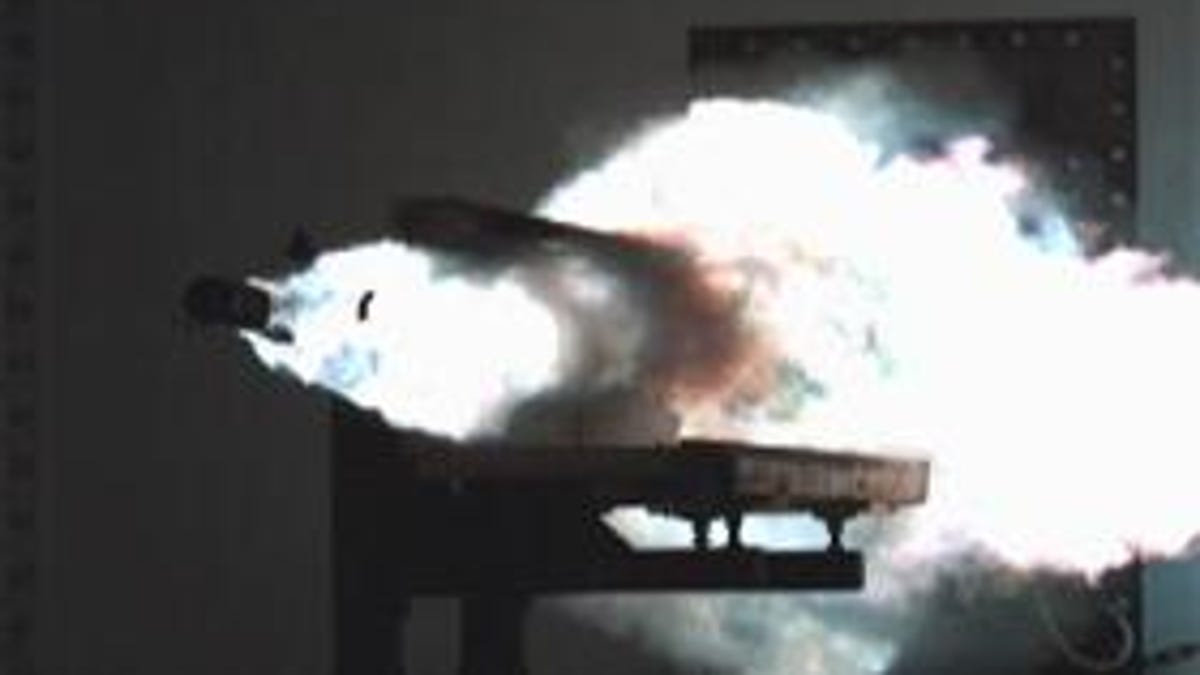Rail gun uses kinetic energy to deliver Mach 5 wallop
Navy tests electro-magnetic rail gun.

The U.S. Navy is installing an electro-magnetic laboratory rail gun at its Surface Warfare Center in Dahlgren, Va., bringing it one step closer to developing a ship-mounted version of this futuristic cannon.
The 32-megajoule weapon appears to be the largest rail gun ever built, according to defense contractor BAE Systems. A joule is what's needed to produce one watt of energy for one second.
It uses a magnetic "rail" instead of a chemical propellant like gunpowder to heave projectiles at Mach 7 for what could be up to 220 miles down range--that's 10 times farther than what contemporary naval guns. The projectile hits at Mach 5, destroying the target with kinetic energy instead of conventional explosives.
Ship building and design are expected to benefit should the new gun prove feasible, mainly because new vessels won't be forced to haul tons of explosives. But while the rail gun uses no gunpowder, it can hardly be called energy efficient. A planned 64-megajoule system would suck around 6 million amps.
In addition to developing new onboard capacitors or pulsed alternators to power the weapon, the Navy must come up with new materials to secure the gun, firing it can dislodge the conducting rails--or even rip the gun barrel apart, according to some reports. The Navy, which has already tested smaller versions, as seen in the video, wants a rail gun onboard a ship as early as 2020.